'Good karma': Laos' new monk-led travel experiences
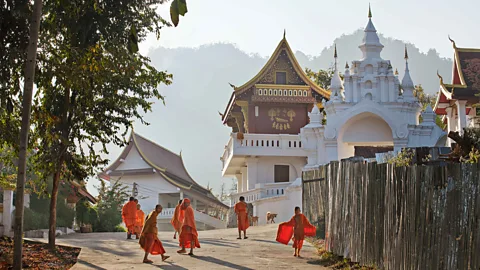 Simon Urwin
Simon UrwinLaos' spiritual heart, Luang Prabang, has seen a surge in tourism. Now, a series of immersive monk-guided experiences are educating visitors about the city's Buddhist heritage.
The city of Luang Prabang is Laos' spiritual heartland, renowned for its rich Buddhist heritage, ornate temples and a significant population of saffron-robed monks. In fact, the 50,000-person spiritual hub is said by many to have the highest population of monks per capita anywhere in the world.
This was once one of Southeast Asia's more off-the-beaten-track destinations, but the opening of the high-speed Laos-China Railway in 2021 has seen a sharp surge in visitors to the Unesco World Heritage-listed city. In recent years, locals say this tourism boom has heavily affected the city's ancient traditions and caused greater commercialisation of sacrosanct Buddhist rituals such as the morning alms-giving.
"Tourism has its pros, but also plenty of cons," says Anat Khamphew, a former monk at Wat Xieng Mouane monastery. "We see people behaving very disrespectfully towards the monks. Historic Buddha statues have been stolen from monasteries, and important symbols of devotion are used as backdrops for an Instagram selfie."
In response, Kamphew set up a YouTube channel to show travellers coming to Luang Prabang how to have a more positive impact, encouraging them away from over-touristed hotspots and underlining the importance of the city's Buddhist roots. "I wanted to help play a part in recovering Luang Prabang's spiritual heart and soul," he says.
Khamphew isn't alone. A handful of other former monks in the city have also set up tour-guiding companies, like Orange Robe Tours and Spirit of Laos, to help promote a better understanding of Luang Prabang's traditional Buddhist culture and customs. One of Khamphew's former monastery classmates also established the artisan store LaLaLaos to help girls from poor rural areas get a secondary education, and another ex-monk created Kaiphaen, a highly regarded vocational restaurant that trains marginalised youths from local villages.
"These businesses not only give you a more authentic and ethical experience, but the chance to give back," Khamphew says. "It's how travel should be: thoughtful and beneficial to all. And that's good karma."
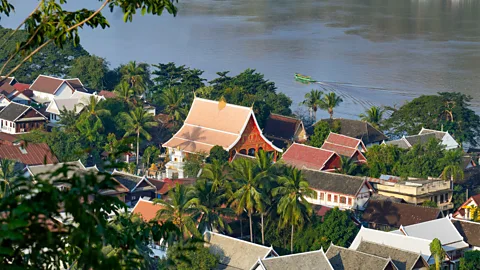 Simon Urwin
Simon UrwinWorld capital of monks
Located at the confluence of the Mekong and Khan rivers at the foot of jungle-swathed Mount Phou Si ("Sacred Mountain"), Luang Prabang is the former royal capital of Laos. Established in the 14th Century, it soon became a centre of Buddhist learning and monastic life, a role that continues to this day. Some 33 opulently decorated wats (Buddhist monasteries or temples) are scattered across the city, many dating to between the 16th and 19th Centuries, and the city is home to an estimated 1,000 monks.
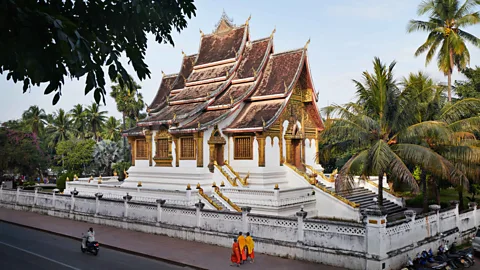 Simon Urwin
Simon UrwinCentre of spirituality
Luang Prabang takes its name from the golden Phra Bang, the country's most sacred Buddha icon, which is housed in the city's National Museum complex in a dedicated temple. "It represents Buddhism coming to Laos and is believed to protect the nation; it's why the city is so venerated," says Khamphew. Visiting wats, performing pujas (devotional acts), offering alms and cultivating merits with good deeds form a key part of daily life among Luang Prabang's largely Buddhist population.
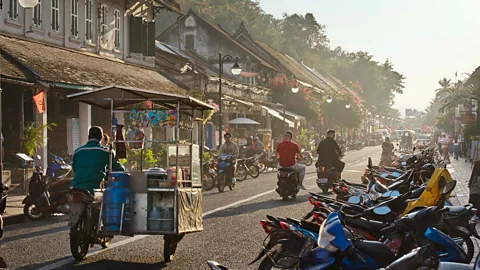 Simon Urwin
Simon UrwinThe tourism paradox
Luang Prabang's profound and omnipresent spirituality, coupled with its eclectic architectural styles – a blend of Laotian, Buddhist and French colonial – have made it increasingly popular with visitors, including Instagrammers and influencers.
"The problem is that what was once a spiritual place has now been transformed by the digital world," says Khamphew. "Many people are led by 'Top-10' or 'Most-Instagrammable' lists; they go to the same places, experiencing the exact same things – all through their phones. They end up missing the essence of Luang Prabang and ultimately spoiling what they came to enjoy."
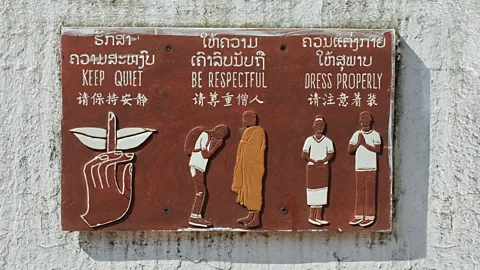 Simon Urwin
Simon UrwinCultural erosion
One of the rituals affected by the city's tourism growth is the Tak Bat, a solemn daily ceremony dating back more than 600 years, where hundreds of barefoot monks file through the streets before dawn collecting alms. Despite signs requesting appropriate behaviour from onlookers, these are often ignored. "It hurts my heart to see such disrespect,” says Parn Thongparn, a local nun-turned-tour guide who avoids the ceremony and takes her guests elsewhere for a more peaceful experience. "We love visitors, but if they took a little time to understand our culture better, it would help protect our beautiful traditions."
 Simon Urwin
Simon UrwinFood for thought
One particular problem is the offering of inappropriate alms by tourists, such as plastic-wrapped junk food or leftovers. "Food eaten by monks must be fresh, clean and pure; any dishes should be vegetarian, avoid spices and ideally be prepared at home that same morning," explains Linda Heu, a cook at the city's Wat Munna monastery. "Most importantly, it should be a meaningful gesture, not just something for a photo opportunity."
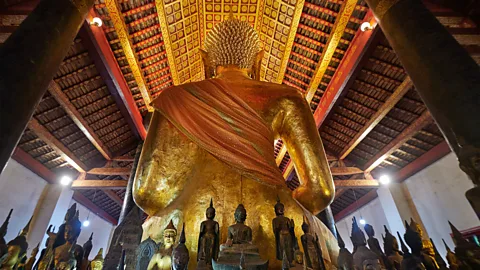 Simon Urwin
Simon UrwinTravel the monk's way
Former novice monk Bounthan Sengsavang set up his guiding business Spirit of Laos in 2024 to ensure a more respectful approach towards Luang Prabang's monks, as well as a chance to take visitors on a deeper journey into Buddhism. "The people most closely related to the subject should be the ones who guide you," says Sengsavang. "If you haven't been a monk and lived in a monastery yourself, you don't know what it's like. Buddha himself taught from experience. I like to do the same."
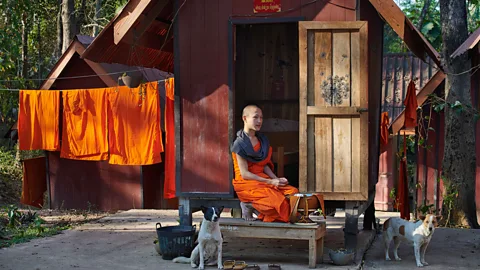 Simon Urwin
Simon UrwinA simple life
Rather than offer a long checklist of temples to visit on a whirlwind city tour, Sengsavang prefers to spend quality time in a small handful to show the monks' daily lives to his guests in detail. "The monks live very simply," he says. "Wealth and possessions are seen as the roots of suffering. Without them, monks can dedicate themselves to meditation, study and ethical living. And by relying solely on alms from the community for food, they practice humility and gratitude."
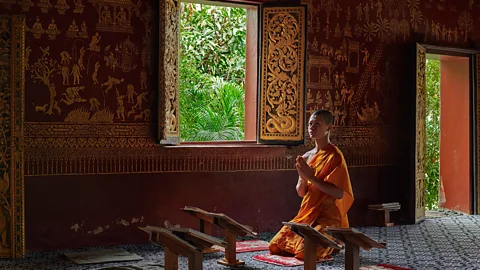 Simon Urwin
Simon UrwinTogether in harmony
Sengsavang can also facilitate sessions of prayer, chanting and meditation in the company of monks upon request. He tells me that meditation can be learned in one or two days; be performed walking, sitting, standing or sleeping; and that its benefits include stilling a stressed mind and overcoming depression. "The monks are always happy for us to join them," he says, noting that they often enjoy interacting with visitors afterwards. "It's a great way to connect with them and find out who they are, why they joined the monastery and help them practice their English."
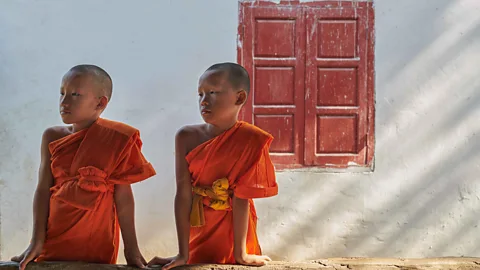 Simon Urwin
Simon UrwinMother love
The majority of boys in Laos spend time in a monastery, from a few weeks up to a lifetime. As well as receiving a free education, their ordination is considered vital for their parents' spiritual wellbeing and reincarnation – particularly that of their mother. "In the Lao Buddhist tradition, when a boy becomes a monk, the merit helps elevate the mother's karma," Sengsavang explains. "That improves her chances of a good and happy rebirth after death."
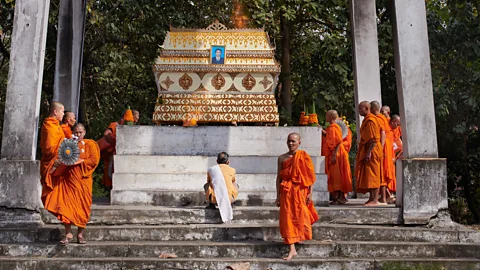 Simon Urwin
Simon UrwinCircle of life
Sengsavang's tours don't shy away from life's realities, and can include a visit to a Buddhist cremation. (Visitors are welcome to attend as long as they remain at a respectful distance.) "Everything ends; we just don't know when," he says. "Seeing a cremation is important; it reminds people of the value of the short life we have. Perhaps it will also help them find their purpose or inspire them to live their own lives better. If that happens, it's a form of enlightenment."
--
If you liked this story, sign up for The Essential List newsletter – a handpicked selection of features, videos and can't-miss news, delivered to your inbox twice a week.
